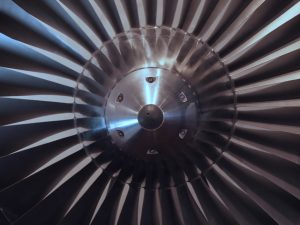The use of gas turbines has increased over the past few years. The global preoccupation with lower maintenance costs of power generation equipment and processes that do not adversely impact the environment have dictated the shift from reciprocating engines to gas turbines.
According to Lucintel, the global gas turbine market for power generation will touch a whopping $13.2 billion by 2021 and will continue to grow at a compounded average of 3.3% per year.
Why are Gas Turbines Preferred?
Gas turbines are turbomachines that have high power to weight ratio. They can be much smaller in size than other engines are capable of producing the same level of output. They also happen to be scalable in terms of the basic technology. This is the reason why gas turbines can run the gamut from ones that generate around 38 kW of power to large industrial structures.
The working fluid of choice is air. It is compressed at the inlet, mixed with the fuel and fired to create a heated flow that can then operate the rotor and electromagnet assembly for the desired output of electricity.
A gas turbine as a result produces minimal hazardous wastes. Most of the heated air is reused to drive the compression unit and the rest that is exhausted into the atmosphere doesn’t really contribute to environmental degradation because of complete combustion and low CO emission levels.
Gas turbines can work with a wide choice of fuels and fluids. They require lower pressures and thus the structures can be less robust than alternative engines. The output speed is high. But thanks to fewer moving parts the wear and tear and the cost of lubrication are both moderate.
In a fast paced economy that demands power but is veering towards the sustainable approach, gas turbines fill a void. Over the next few years innovations in the industry will drive sales for the 61-180 MW and more than 180 MW output variants.
CMF is Glad to be a Part of the Movement:
Central Metal Fabricators has been an industry leader in the production of silencers for exhaust stacks, inlet stacks and enclosures. We also supply exhaust plenums, filtration systems, enclosure panels & doors, exhaust diffusers, turning vanes, vandal-rain-snow roof/guards, exhaust stack eductor assemblies, and acoustical-thermal panels, turbulators and turning vanes. For the latest company news and information follow us on Twitter and LinkedIn.

